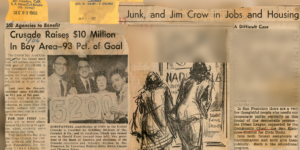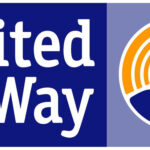Search
A Look Back at Housing Justice
February 23, 2022

A look back at housing justice in the Bay Area’s Black communities with Urban League of the Greater San Francisco Bay Area.
The disparities in today’s housing system in the Bay Area have enlarged the Bay Area’s immense racial wealth gap. Black residents are half as likely to own homes and twice as likely to live in poverty. However, these disparities are not new. Historically, housing for Black communities has long been an issue in the Bay Area. Throughout the years, discriminatory practices created the need for organizations to form and fight for housing justice in Black communities. Founded in 1946, the Urban League of the Greater San Francisco Bay Area has been one of these organizations.
The Urban League of the Greater San Francisco Bay Area (ULBA) was founded as 1 of 144 affiliates of the National Urban League and formed as a nonprofit community service organization in the five Bay Area counties that helped Black Americans and minorities achieve equal opportunities in education and employment. It operated an economic development program in low- and moderate-income communities to advance economic development that promoted affordable housing and community, business lending, as well as consumer education.
At the time of its formation, ULBA’s services were crucial to the Bay Area and the Black communities that were fighting the effects of Jim Crow laws. Employment and housing were difficult for Black communities in the Bay Area to find. Redlining, which was a racist and discriminatory practice set against those who can receive financial services based on where they lived, began in the 1930s in the wake of the Great Depression. This influenced the dramatic unequal treatment of such communities. Although it was officially banned through the Fair Housing Act of 1968, the damage of redlining still lingers as organizations like ULBA fight for more equitable government services. To learn more about Redlining and its effects on Bay Area communities, view this video from NBC Bay Area with Richard Rothstein, an expert on the history of housing segregation in America.
In 1950, the Community Chest, now United Way Bay Area, began supporting and funding ULBA as one of its 100+ agencies and continued through 1999. While there are many examples of ULBA and UWBA’s paths crossing, one key figure who played a prominent role in both organizations was Ms. Carole Watson. Carole was the Vice President of UBLA from 1985 to 1990, then President and CEO from 1996 to 1998. She then went on to be the Chief Community Investment Officer at UWBA from 1999 to 2011.
“The major contribution that the Urban League has historically facilitated across the country has been to serve as an intermediary between the white community and black community. But also, the Urban League Bay Area has collaborated with public, nonprofit, and private partners to serve as a funnel to help the Black community to secure employment and housing through training, collaboration & advocacy. They have helped people cut through discriminatory practices.” – Carole Watson
Since the beginning of the pandemic, the newly formed Urban League of the Greater San Francisco Bay Area has reconnected with its Bay Area roots. By staying true to their original goals, they are striving to achieve equal opportunities in education and employment and advancing economic development for Black and underserved communities. Current ULBA President, Kenneth E. Maxey II said they are looking forward to opening a physical space this summer to run their programs.
It is only with the contributions of organizations like the Urban League of the Greater San Francisco Bay Area that Housing Justice has been able to advance over the years. While there is still much work to be done in Housing Justice, we look forward to the work ULBA will continue to do for the Bay Area’s Black and underserved communities to dismantle poverty and build equitable pathways to prosperity for all of the Bay Area.
To stay up to date with the work of the Urban League Bay Area, visit the ULBA website.


